
At the beginning of February, as I was observing the 21 Boston project from a couple of blocks away in the neighborhood, I realized that something different was happening – the tower crane was being removed. It’s quite a process, so if you want to bone up on tower cranes, here’s a diagram:
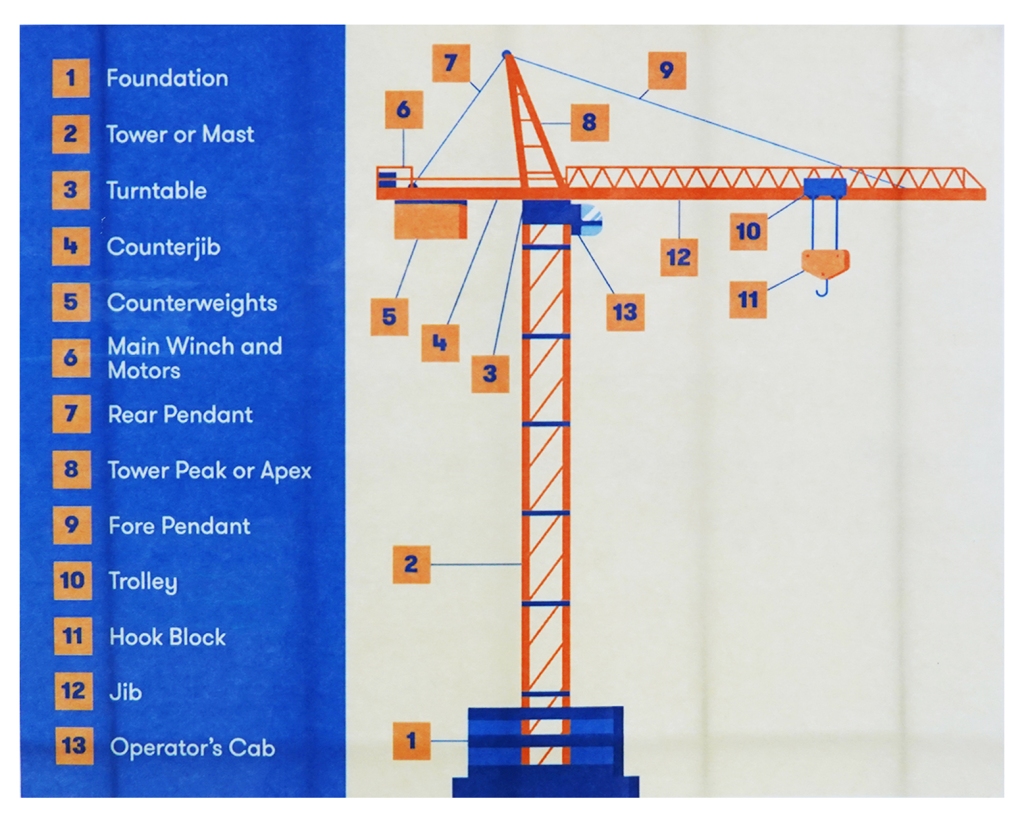
This was posted by Compass Construction at the time that the crane went up, which I covered in an early blog post: https://markspitzerdesigns.wordpress.com/2022/11/06/21-boston-03-tower-crane/ . A key element during both the assembly and disassembly of the crane is maintaining balance and stability among the various moving parts as they are moving, as you will see here. Step one, the removal of the nose, or jib extension, had already been accomplished when I arrived with my camera. This extension is what gave the crane enough reach to nearly cover the whole 5 acre site. Now it was time to remove the trolley, which runs through the jib and guides the cables down to the hook block. This was being done in the southwest corner of the site since, even with the jib extension removed, the jib arm was too long to offload the trolley near the Boston street work yard. You can just make out the two workmen at the end of the jib in the photo below.
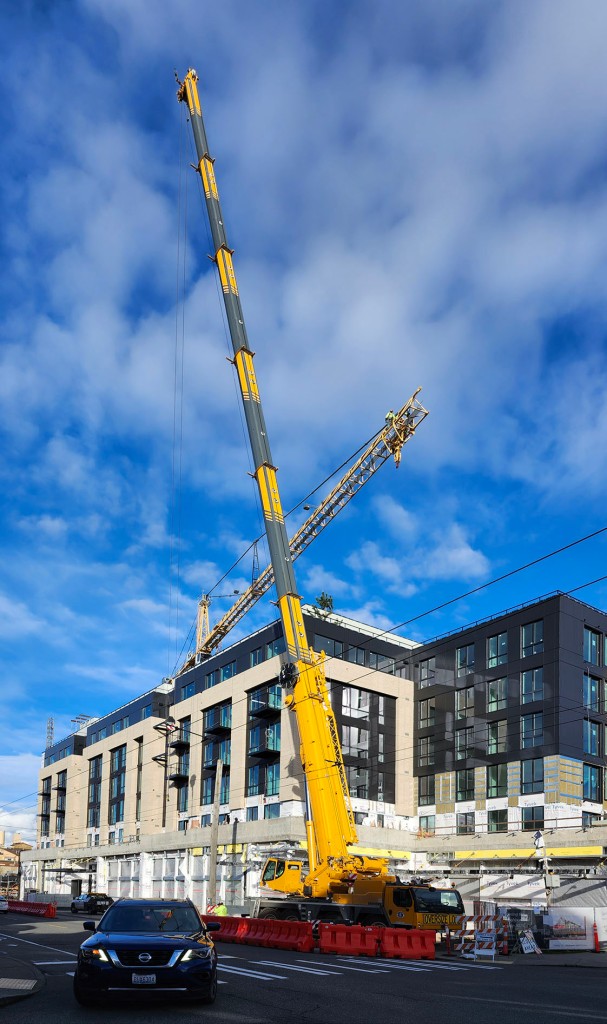
The truck-mounted extension-boom cranes are in themselves pretty impressive in that they’re made up of seven cylinders that telescope neatly inside each other for reach, compactness and strength. It’s a dizzying job to free up the trolley;
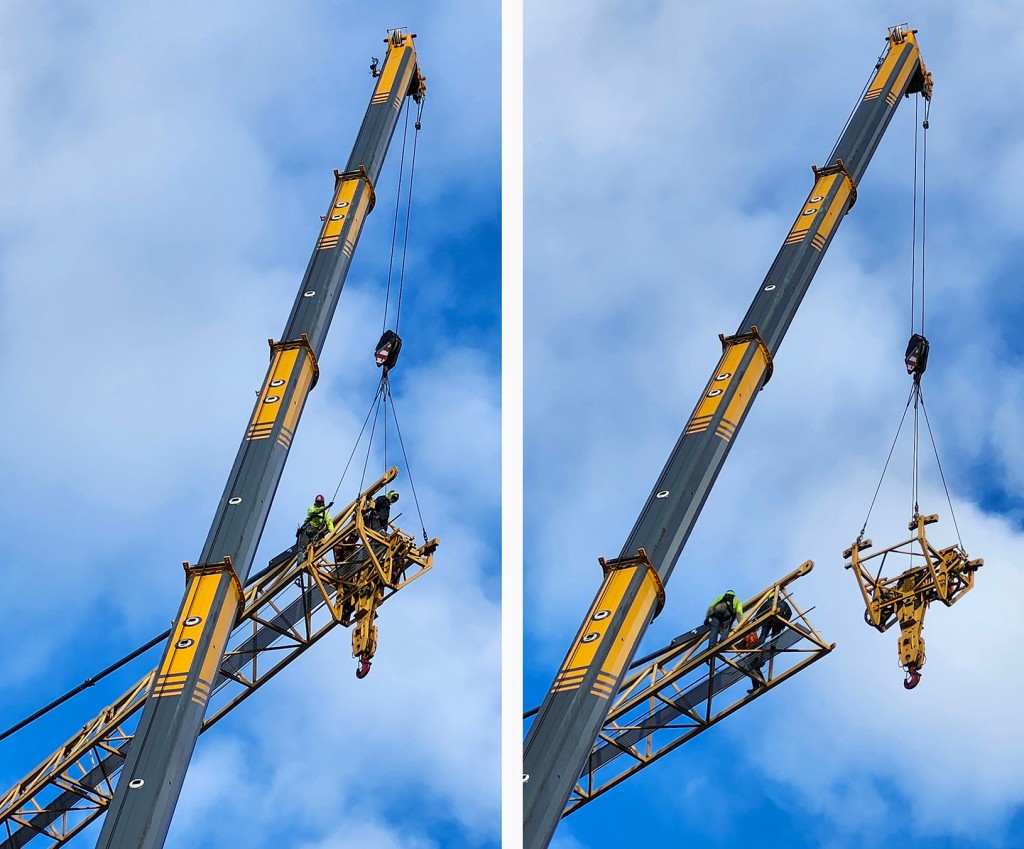
but it looks so simple afterwards. On the other hand, what looks so delicate hanging in the air above the project, looks pretty muscular sitting on the ground. They had fun getting it turned up-side-down so it could sit on the ground.
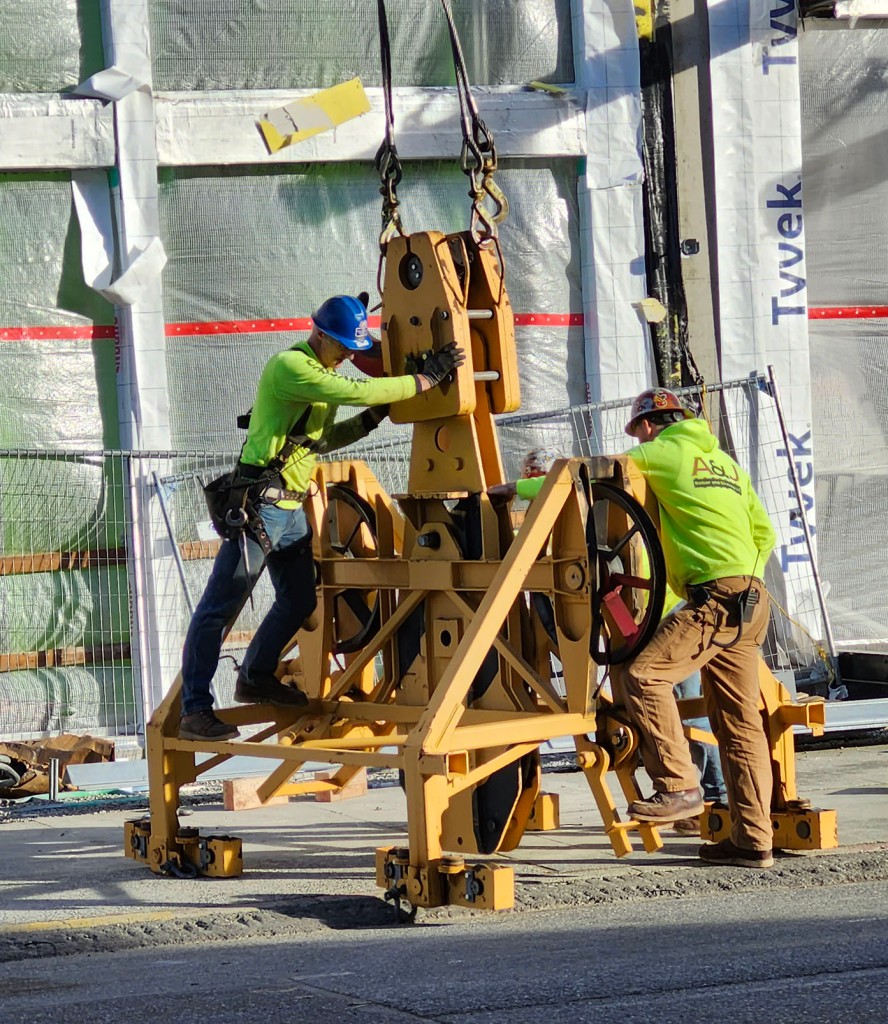
With the trolley out of the way, the process of removing the jib and counter jib could get started. This work occured from the Boston Street service yard, which in the photo below is hidden behind the Cafe Hagen.

With the tower jig swung in an east-west direction, the extension-boom crane reaches up to help get the process started.
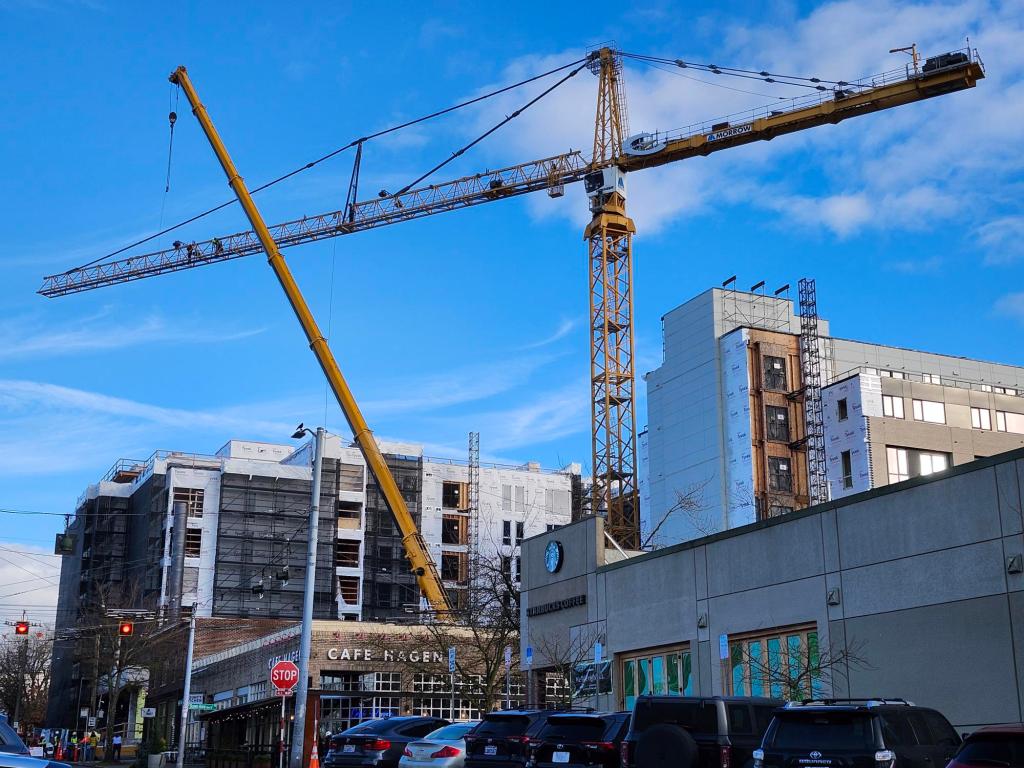
The next piece to be removed will be the end of the jig; but before that can happen, the diagonal fore pendant restraining rod has to be released; but before that the extension-boom crane has to support the jig so it doesn’t flop down. Now with the fore pendant in slack, the workmen can work on loosening the connection between the two pieces of the fore jig. Note one very small detail. There is a rope hanging from the end of the jig, which seems incongruous for such a tough structure; but it will provide a key ingredient to the next step.
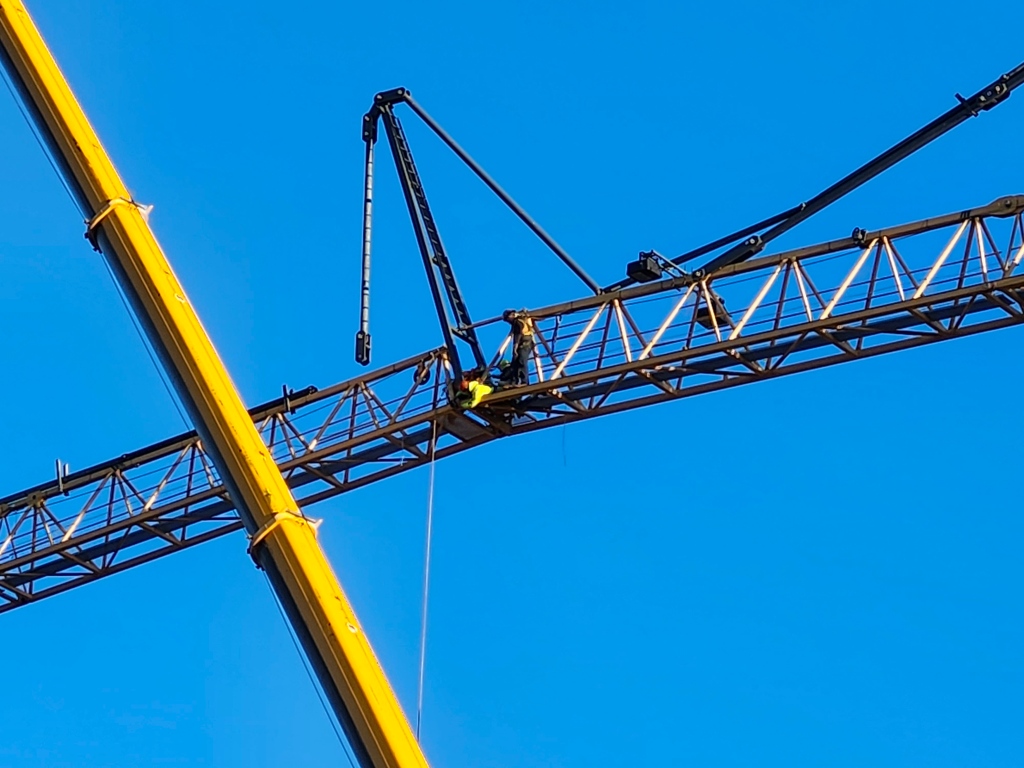
This is dizzying work, even with safety harnesses; and it’s also tough. The connections are tight on purpose because of the stresses on the jig; and the workmen had to use sledge hammers to loosen them up.
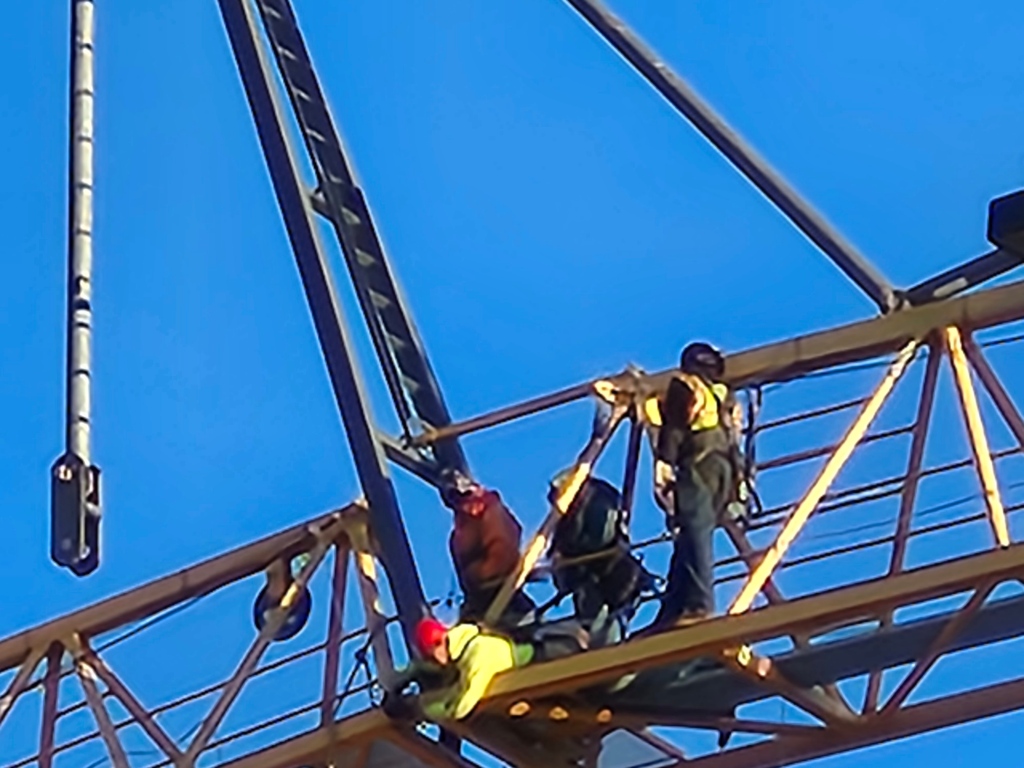
With the end of the jig freed up, the extension boom crane can swing the jig away. Now it’s clear why that crane, using a double support cable system, is so critical.

The job then is to somehow steer the free jib into the narrow service driveway below; and that’s where the hanging rope comes in.

Although it’s hard to make out, the rope is hanging at the far end of the jib and is being tugged on by one of the workmen – just the right amount – to line the jib up with the alley, where it can be carefully set down.
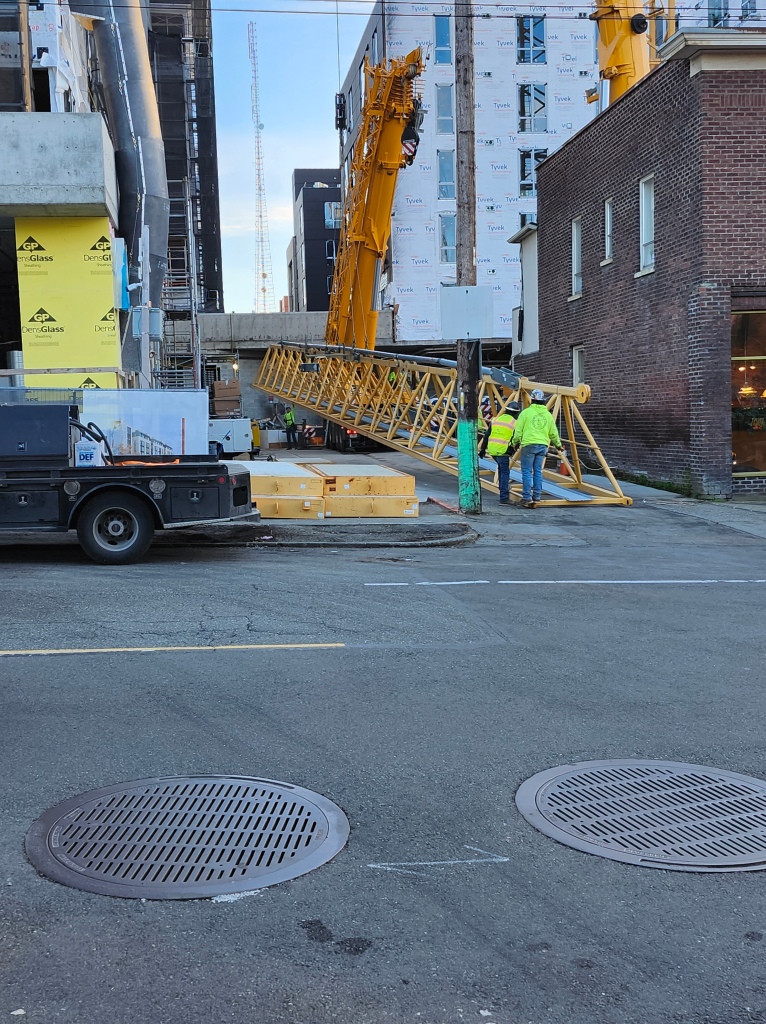
Once things are stable, the fore pendant (which has been riding on top of the jib) can be removed and set to one side. By this time, it’s getting to be late in the afternoon; and it’s decided that the remaining jib pieces and tower cab will be taken down the next day.
Now cue a slightly darker and cloudier morning sky. Here, the pendant for the inner portion of the fore jib has been detached while the extension boom crane holds things steady.

Then the same lowering sequence from the previous day takes place – first swinging the jib away from the tower.
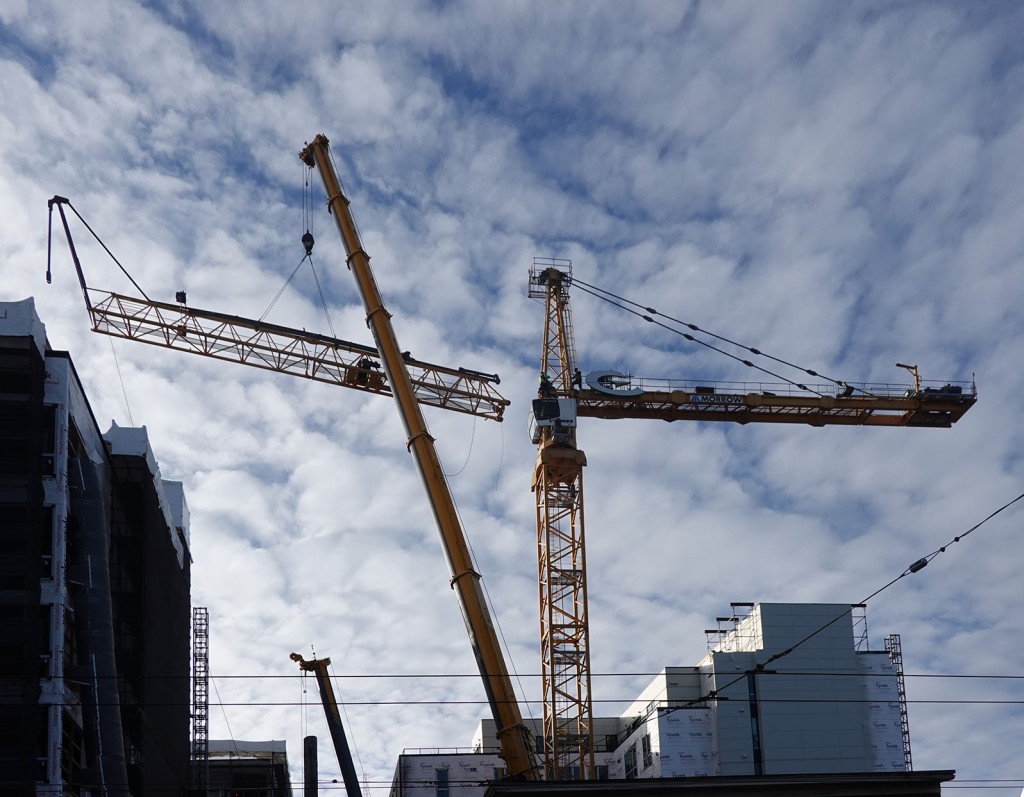
Then aligning the jib with the alley below.

Notice one difference, however. This jib comes down with the tower peak attached to it.
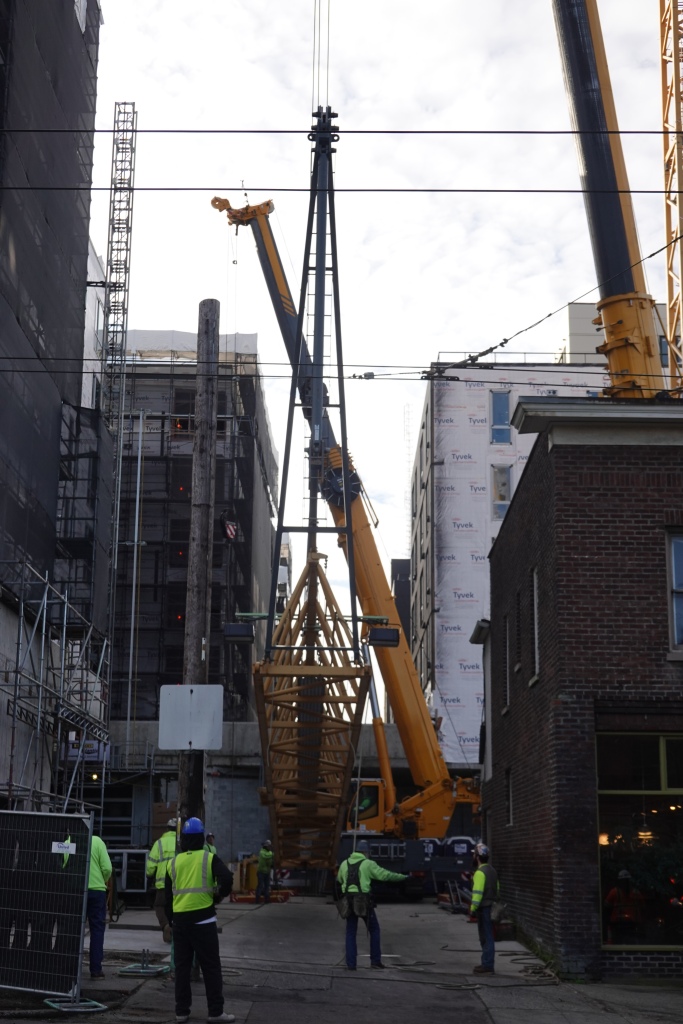
This will be removed once the jib is settled and the boss says it’s time.

It was pretty obvious who on the job had the most wisdom about the operation and also clearly garnered the most respect – but who also hustled as needed for the next step as the tower peak is detached (with sledge hammers) from the jib.
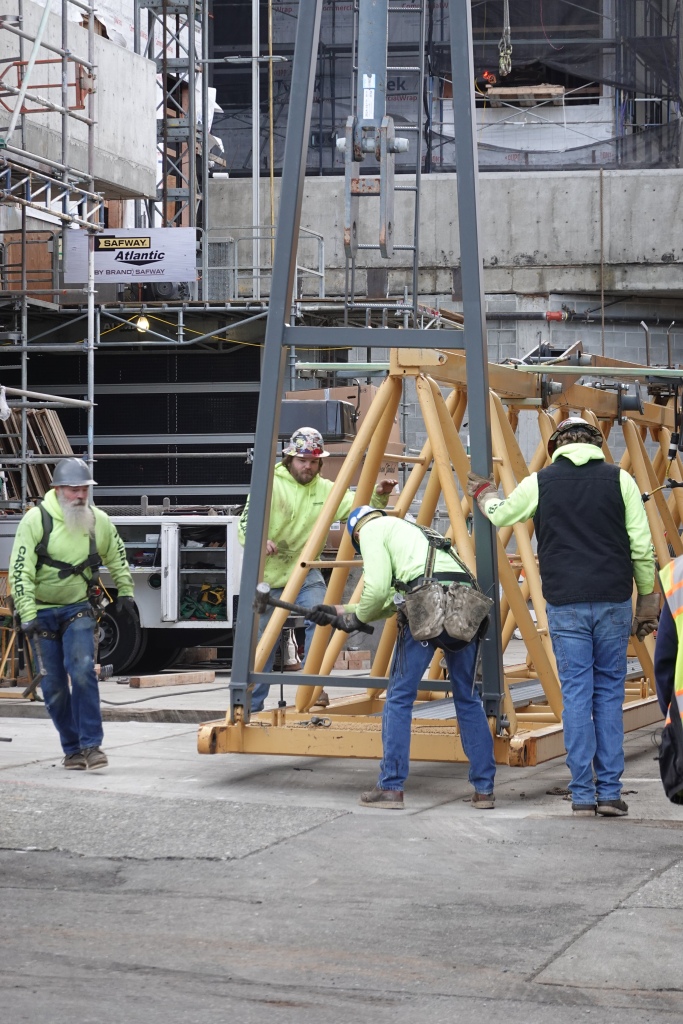
With the tower peak lifted out of the way, the jib can be loaded, along with the trolley, and hauled to the next job.

No small maneuver for the truck; but the driver made it look easy.
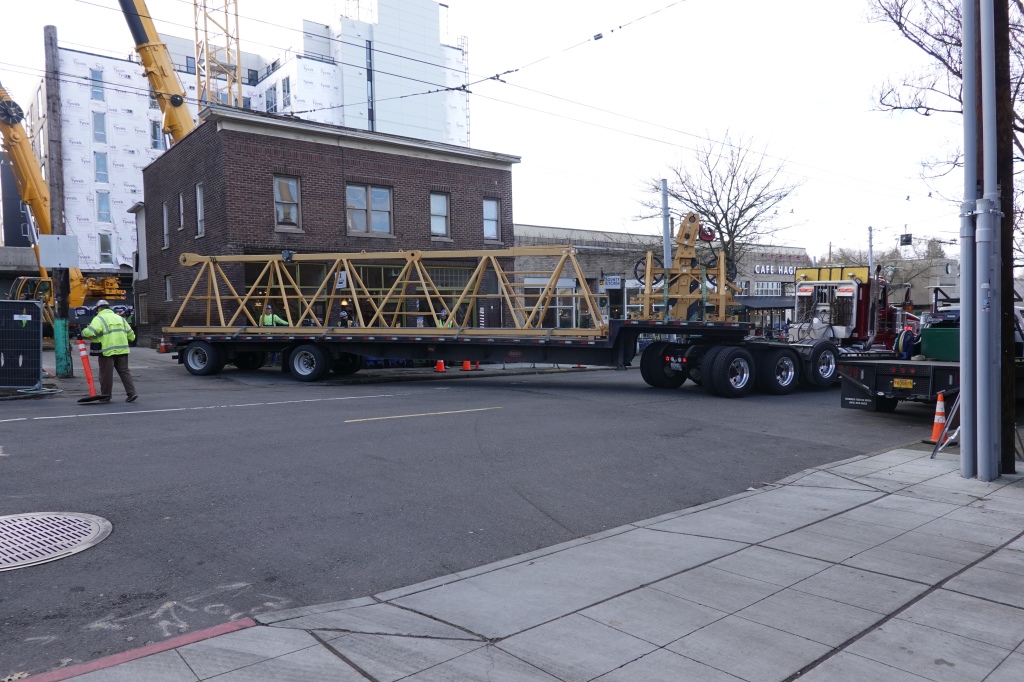
All of this left just the counter jib, the rear pendant, and the tower itself to come down. The counter jib was swung around 180 degrees and taken through the same steps as the other jib elements.
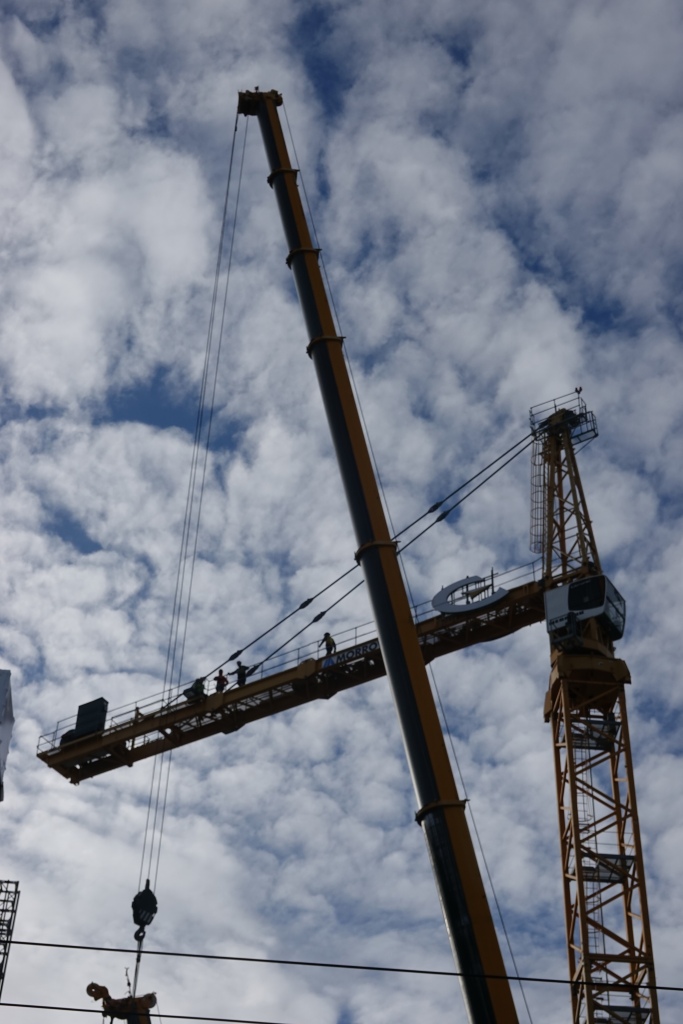
The tower and cab would wait for the next morning; so overnight that’s all there was left to be seen of the crane from the neighborhood.
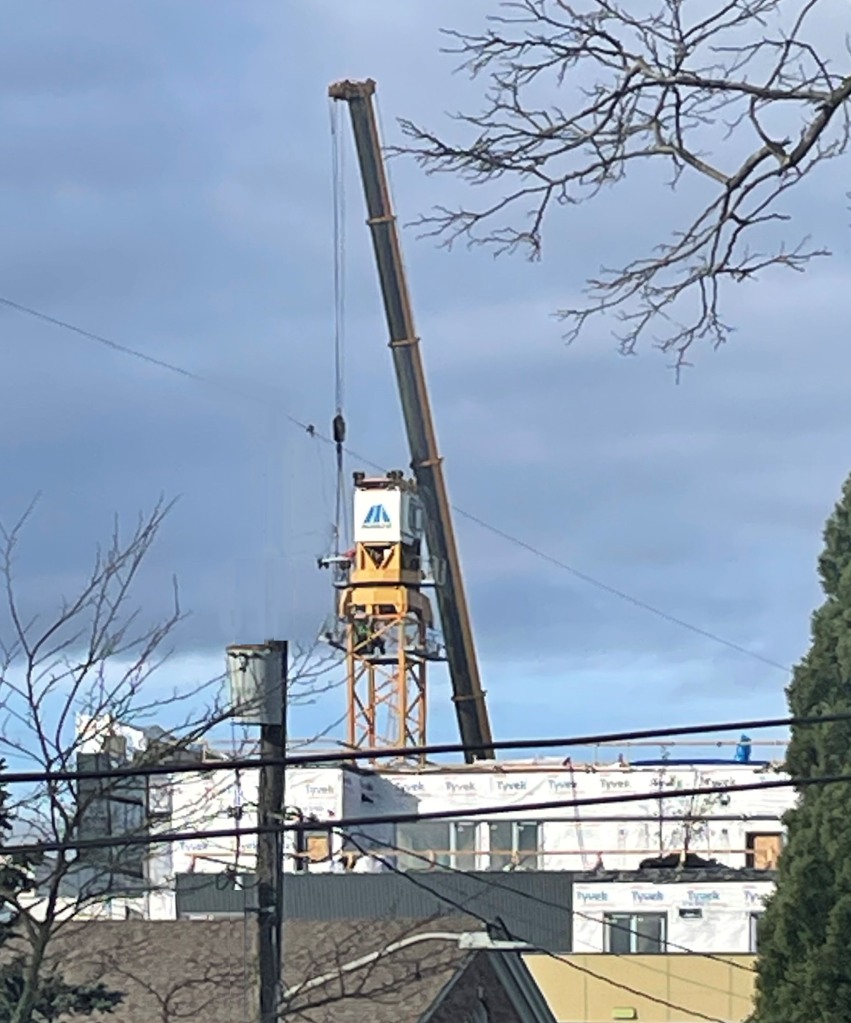
The next morning, the tower cab was lifted down into the alley.

That left a few sections of tower as the only evidence that there had been a crane there.

It was removed, one floor level at a time, using the same movable work platforms from which the bolted connections had been made during the original installation.
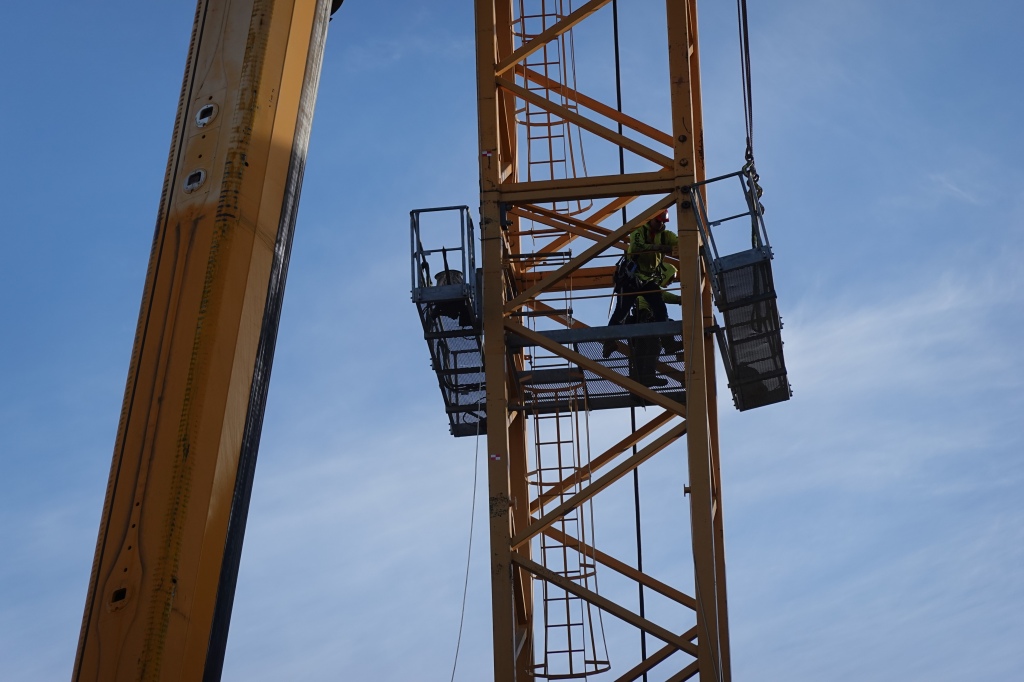
And in the end, it was good-bye Queen Anne.
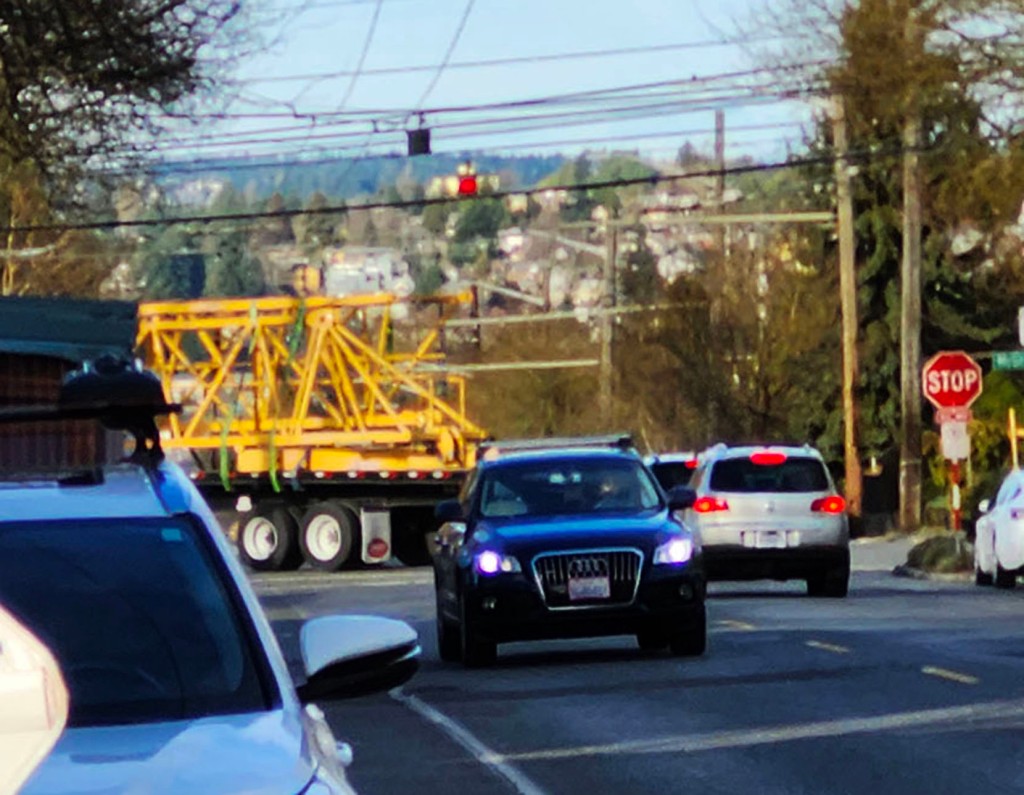
This photo is technically a bit out of sequence, but the gesture is not. It was quite a run. Now we’ll just have to learn to live without the tower crane swinging above our neighborhood.

You must be logged in to post a comment.